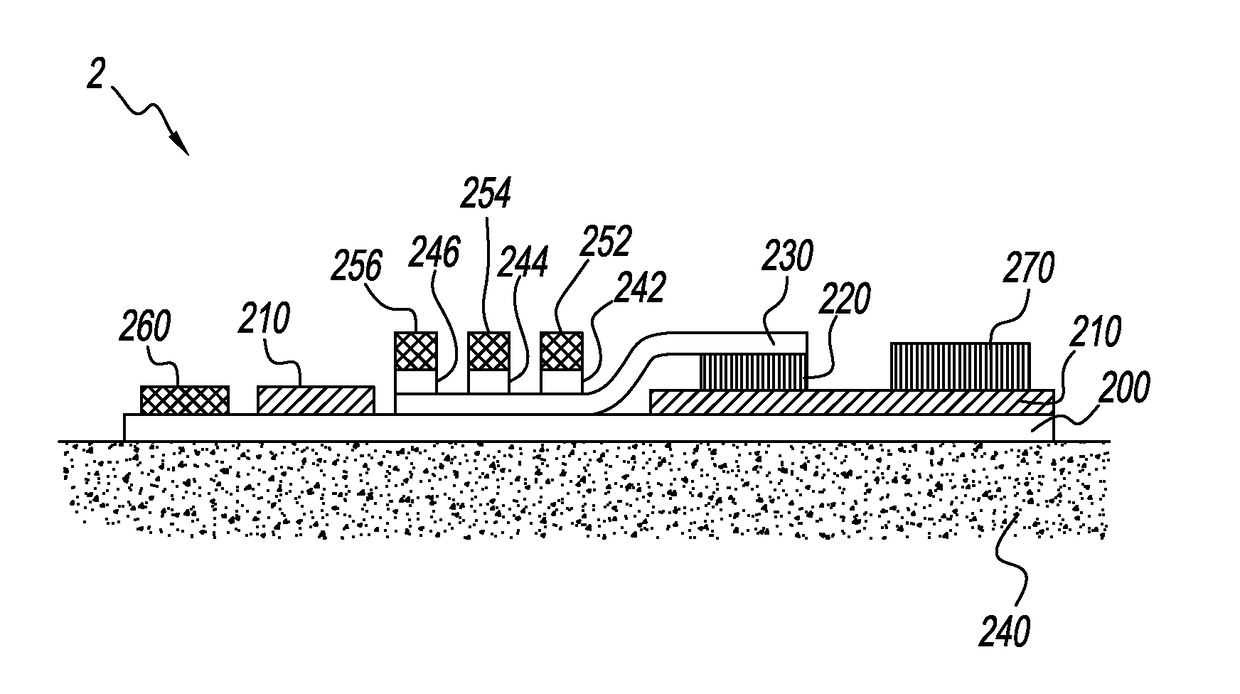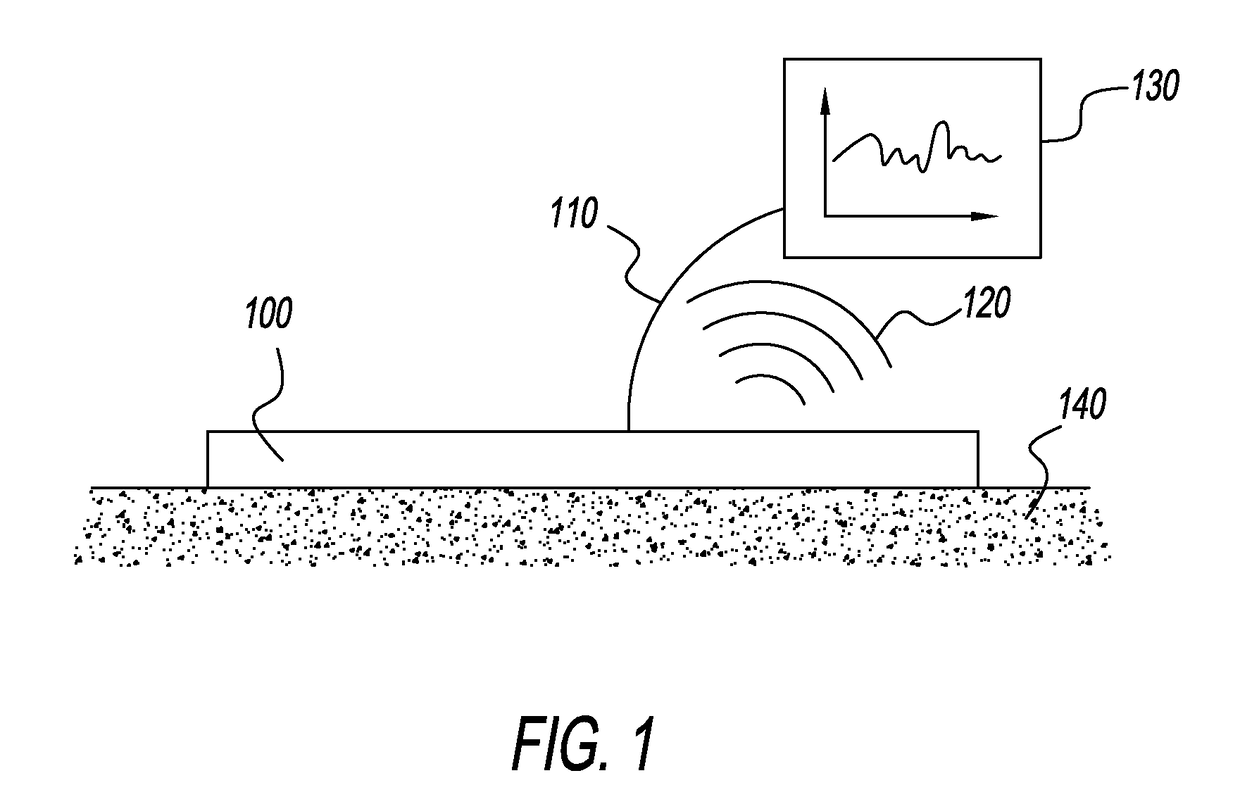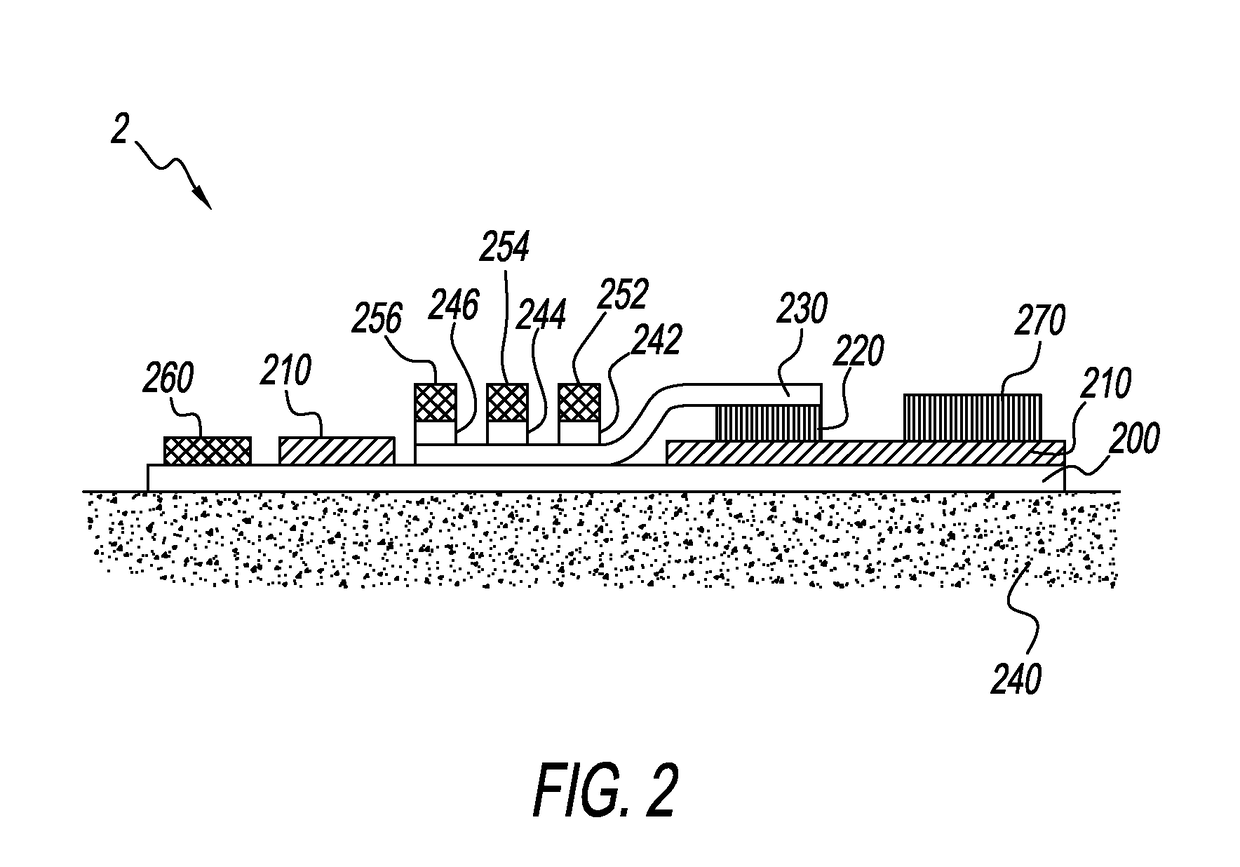Sweat sensing device communication security and compliance
a technology of sweat sensing device and communication security, applied in the direction of person identification, telemetric patient monitoring, wireless architecture use, etc., can solve the problems of sweat sensing not reaching its full potential, reducing the public perception capability and opportunity space for sweat sensing, and reducing the effectiveness of sweat sensing. , to achieve the effect of effective stimulation and analysis, enhancing the predictive and alert capabilities of sweat sensing devices
- Summary
- Abstract
- Description
- Claims
- Application Information
AI Technical Summary
Benefits of technology
Problems solved by technology
Method used
Image
Examples
example 1
[0071]A sweat sensor device is used by an employee in a mining operation. When the employee arrives at work for his shift, he applies a sweat sensor device that is coded with a unique identifier assigned to him. After the employee clocks in, the employer's on-shift system determines that he is on the job and the device takes an operation and compliance reading. The device communicates to the device user that the employee's device is in good skin contact. Then the device initiates sweat measurements, and determines that the device is operating on the employee's skin because Na+ and K+ concentration trends are as expected for the measured sweat rate. The device also calculates an identification probability estimate by comparing the identification metrics to an identification signature on file for the employee, and determines that the correct person is wearing the device. Four hours into the employee's shift, the device generates a safety and health alert based on the employee's hydrat...
example 2
[0072]A professional cyclist is participating in a multi-stage race, and is wearing a sweat sensor device during a 100 mile climbing stage. The device communicates via Bluetooth to a companion transceiver, which in turn communicates via cellular network with the team chase car. During the latter portion of the stage, the sweat sensing device initiates an operation and compliance reading, and determines the device is in good contact with the cyclist's skin. Then the device takes a reading on a group of selected analytes to measure fatigue, hydration level, and inflammation. The device compares the readings to predetermined thresholds representing optimal performance, then creates trend data by comparing the readings to the cyclist's prior readings during that stage. The device then compares the cyclist's current analyte profile and trend data with the cyclist's historical analyte profiles and trend data for similar stages of past races. The sweat device data is then used to generate ...
example 3
[0073]A group of soldiers in a hot climate is attempting to secure a dangerous area in order to protect a group of civilians, and they are using sweat monitoring devices to measure their physical and mental stresses through sweat electrolytes, cortisol and cytokine biomarker measurements. Each soldier carries a companion transceiver integrated into their equipment. The companion transceiver communicates with the device, and communicates via secure datalink to the patrol leader and the unit commander. The soldiers have been on patrol for several hours, and sweat readings for two of the soldiers are trending toward dehydration and high stress. The device issues a safety and health alert for dehydration and high stress levels for the two affected soldiers and communicates the alert to the unit commander, the patrol leader and the two soldiers. The commander instructs the sweat devices to increase the sampling rate for the two distressed soldiers. The soldiers increase their water consu...
PUM
| Property | Measurement | Unit |
|---|---|---|
| real-time or near-real-time two-way communication | aaaaa | aaaaa |
| flexible | aaaaa | aaaaa |
| voltage | aaaaa | aaaaa |
Abstract
Description
Claims
Application Information
 Login to View More
Login to View More - R&D
- Intellectual Property
- Life Sciences
- Materials
- Tech Scout
- Unparalleled Data Quality
- Higher Quality Content
- 60% Fewer Hallucinations
Browse by: Latest US Patents, China's latest patents, Technical Efficacy Thesaurus, Application Domain, Technology Topic, Popular Technical Reports.
© 2025 PatSnap. All rights reserved.Legal|Privacy policy|Modern Slavery Act Transparency Statement|Sitemap|About US| Contact US: help@patsnap.com



